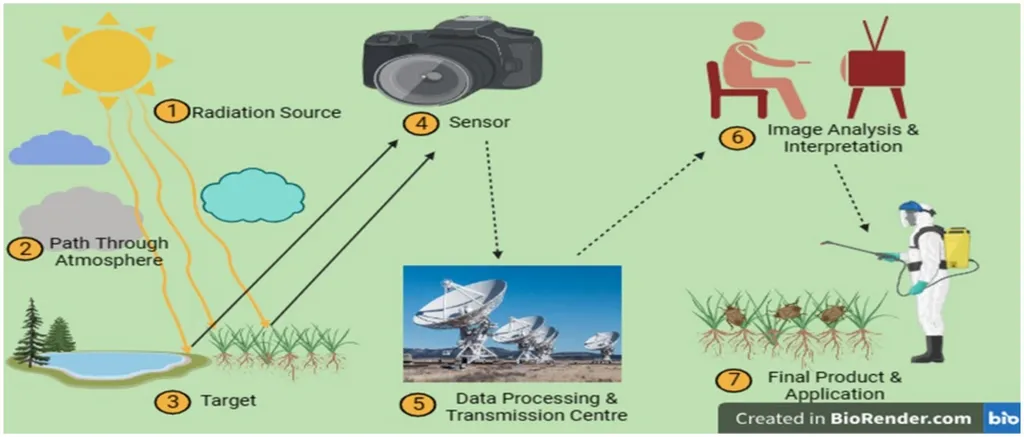In the quest for precision agriculture, researchers have long sought ways to accurately and non-destructively estimate the biochemical composition of individual tea buds. This capability is crucial for managing green tea quality, as the levels of polyphenols, amino acids, and soluble sugars directly influence the final product’s flavor and health benefits. A recent study published in *Artificial Intelligence in Agriculture* introduces a groundbreaking method that could revolutionize how farmers and processors assess tea quality in real time.
The challenge lies in the complexity of non-imaging hyperspectral measurements. When tea buds are stacked arbitrarily, the mixed adaxial and abaxial surfaces and their three-dimensional arrangement create structured interference that confounds accurate biochemical estimation. To address this, lead author Ning Qi and colleagues from the Key Laboratory of Quantitative Remote Sensing in Agriculture of Ministry of Agriculture and Rural Affairs, Information Technology Research Center, Beijing Academy of Agriculture and Forestry Sciences, developed a novel approach called Bilinear Spectral Derivative Gaussian Process Regression (BSDGPR).
“Our method effectively decouples the spectral signatures of individual tea buds from the heap structure,” explains Qi. “By leveraging first- and second-order spectral derivatives, we attenuate the weakly wavelength-dependent leaf-spatial-arrangement term, while unit-sphere normalization combined with a chord-distance radial basis function kernel eliminates the plan-view leaf-front area fraction. This standardization allows us to derive single-bud equivalents from heap spectra.”
The results are impressive. BSDGPR significantly improves the accuracy of biochemical estimations compared to traditional reflectance-domain Gaussian Process Regression (GPR). For tea polyphenols, the coefficient of determination (R²) increased from 0.68 to 0.81, and the Normalized Root Mean Square Error (NRMSE) decreased from 15.55% to 12.64%. Similar improvements were observed for amino acids (R² from 0.56 to 0.71, NRMSE from 19.78% to 15.72%) and soluble sugars (R² from 0.86 to 0.91, NRMSE from 10.85% to 9.05%).
Moreover, BSDGPR demonstrates remarkable transferability. Models trained on tea-bud heaps generalize well to canopy measurements with minimal loss in accuracy. They remain credible across different cultivars and are stable at typical sensor resolutions. The method also shows promise for other crops, achieving R² values of 0.63–0.66 for wheat canopy chlorophyll with NRMSE ≤22%.
The commercial implications of this research are substantial. For tea producers, the ability to non-destructively and accurately estimate biochemical composition in real time can lead to better quality control, optimized harvesting schedules, and improved processing decisions. This can translate into higher yields, better market prices, and enhanced consumer satisfaction.
Beyond tea, the potential applications of BSDGPR extend to other crops, offering a versatile tool for precision agriculture. As Ning Qi notes, “Our approach is field-ready and offers broad applicability, making it a valuable asset for farmers and agribusinesses aiming to enhance productivity and sustainability.”
The study’s findings pave the way for future developments in agricultural technology, particularly in the realm of non-destructive sensing and real-time data analysis. As the agriculture sector continues to embrace digital transformation, methods like BSDGPR will play a pivotal role in shaping the future of farming, ensuring that producers can meet the growing demand for high-quality, sustainably grown crops.

